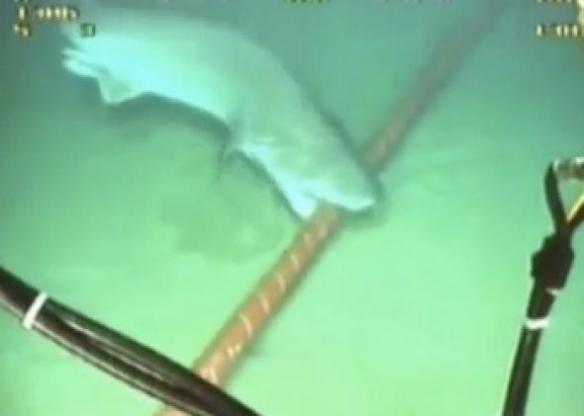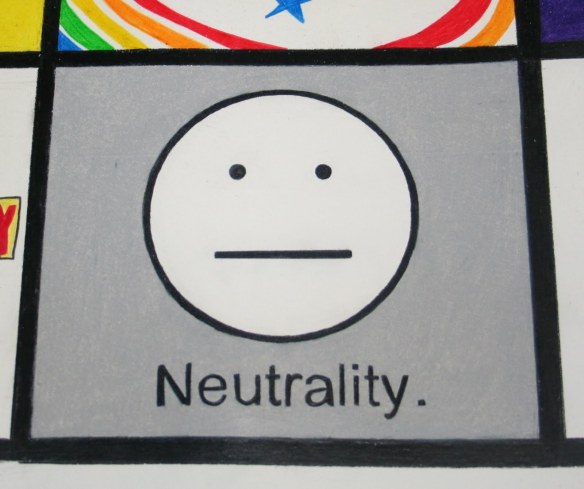This is the third post from the trenches of the Eastern Sociological Society’s conference in NYC this past weekend. The linked workshop entitled, “Decoloniality and the Social Sciences,” explored such diverse topics as floating medical clinics, non-GMO seed sharing, the high seas, cargo, zombies, pedagogy, dolphins, and derivatives.
For my part, I reflected upon decoloniality and the nonhuman. Elsewhere I have discussed the dolphin and posthuman security, and this topic has stayed on my mind. I recently visited Barataria Bay (home of the bottlenose dolphin, at least until the Deepwater Horizon disaster) and Venice, LA. I found it hauntingly desolate with a devastated post-disaster aesthetic; a place only a true ecologist can love—or an oil exec just off the heliport from the tour of his oil rig.




Pictures taken by the author, Feb 2015
The decolonial literature is new to me, and as I did my due diligence with a literature review, I was intrigued by Mignolo’s insistence on “decolonial thinking and doing.” Decolonial thinking de-links epistemically and politically from what he calls “the imperial web of knowledge.”
In short, we must decolonialize our very ways of thinking and being in the world. This epistemic disobedience is necessary for acts of civil disobedience that transform the world. This means body-politics comes before disciplinary management, or more pointedly, decolonial thinking places “human lives and life in general first.” Mignolo writes:
De-colonial thinking presupposes de-linking (epistemically and politically) from the web of imperial knowledge (theo- and ego-politically grounded) from disciplinary management. A common topic of conversation today, after the financial crisis on Wall Street, is ‘how to save capitalism’. A de-colonial question would be: ‘Why would you want to save capitalism and not save human beings? Why save an abstract entity and not the human lives that capitalism is constantly destroying?
Returning to the nonhuman, can this epistemic disobedience be a tactic that aids in co-creating a more just and kind world for all species on this planet? To rephrase as Mignolo’s question: Why would want to save neoliberal forms of production that destroy the only livable planet accessible to us? Capitalism is destroying more than human lives. It is destroying the very biosphere that allows life to persist and thrive. How is this topic not all that we talk, write, and think about in all epistemic communities?
In my terms, can decolonialty be used against a human centered politics that takes the biosphere as a place to colonize and deplete?
In many ways, decolonial thinking and doing could encompass the nonhuman. Bodies of color and gendered bodies have been animalized in colonial and paternal regimes. Woman are chicks, bitches, sows, cows, birds. Rod Coronado reminds us that the treatment of wolves in the United States twins the way indigenous people were (and are) treated during North American colonization. In human centered politics, non- human animals are useful only in their kill-ability/eat-ability and nature for its rape-ability/use-ability. They are use value only.
This is another kind of “colonial wound,” (regions and peoples classified as underdeveloped economically and mentally), as Mignolo terms it. If decolonial thinking can link diverse experiences and histories heretofore ignored in colonial/imperial systems of knowledge, can it also create an ecological thinking? If colonial ways of being still can’t allow humans to be full humans, how is it even possible to widen this to the nonhuman world? I hope so, but I also know that hope will wear thin with the changes wrought by the Anthropocene.
Be it trees, lemurs, bacteria, mosquitos, koalas or homo sapien sapiens, we should, as members of a shared biosphere, be able to thrive on this planet—even if the way we thrive is different for all of us. A new complex web of co-worlding—snatched from the imperial one—is the only answer. Accomplice networks must be created.
References:
Walter D. Mignolo. Epistemic Disobedience, Independent Thought and De-Colonial Freedom Theory, Culture & Society 2009 (SAGE, Los Angeles, London, New Delhi, and Singapore), Vol. 26(7–8): 1–23













 We’ve talked about his many times,
We’ve talked about his many times, 

































You must be logged in to post a comment.